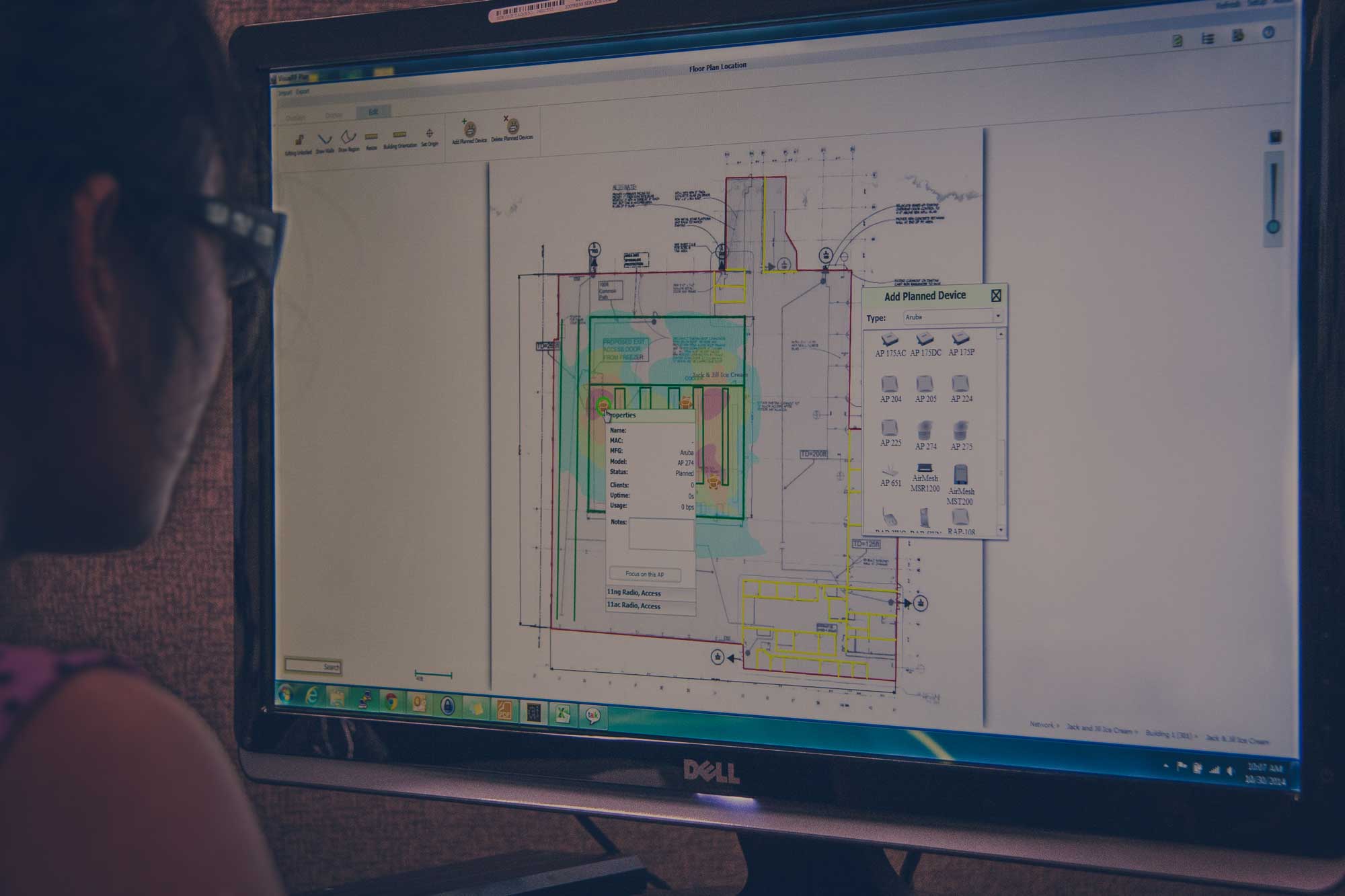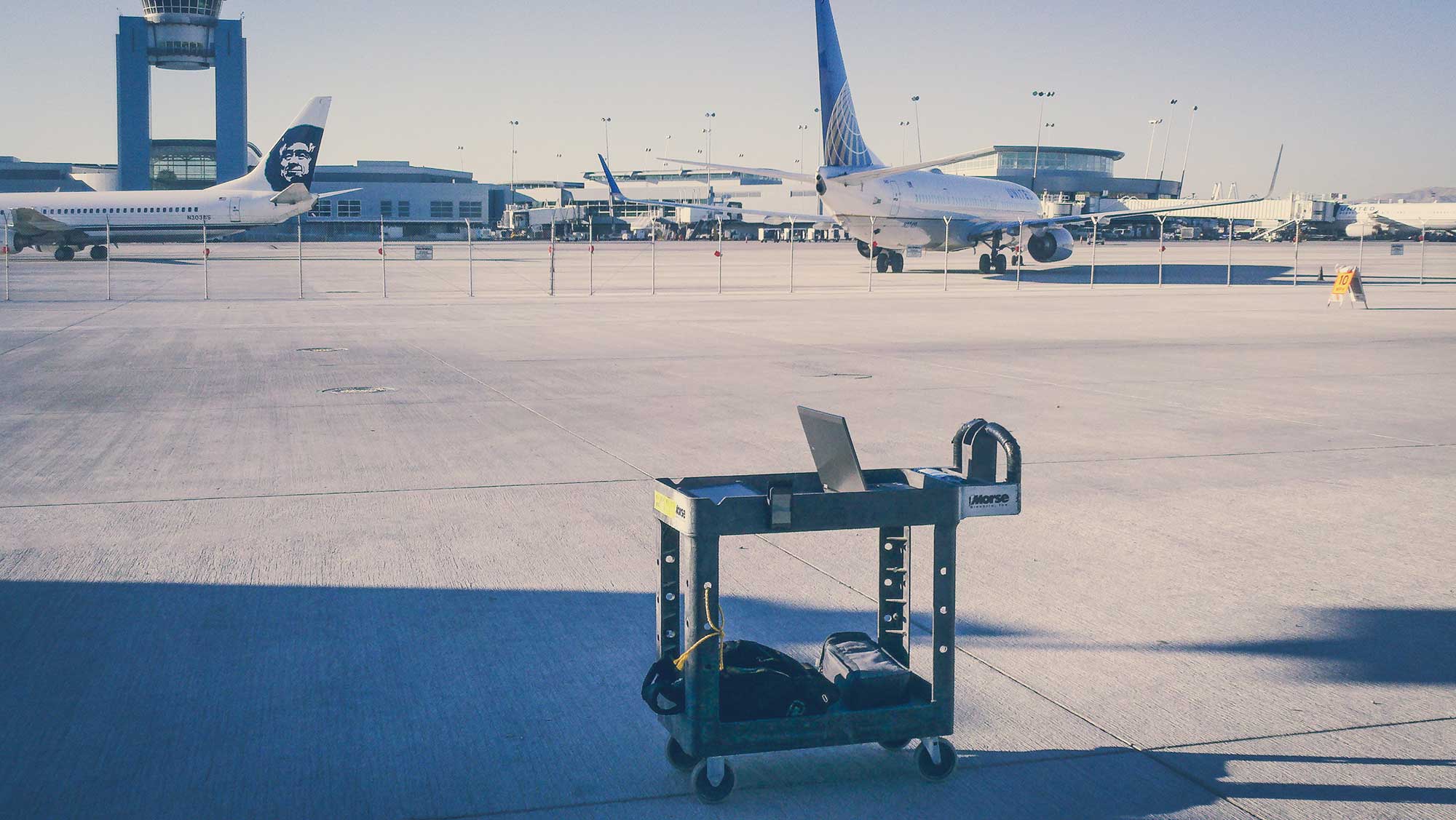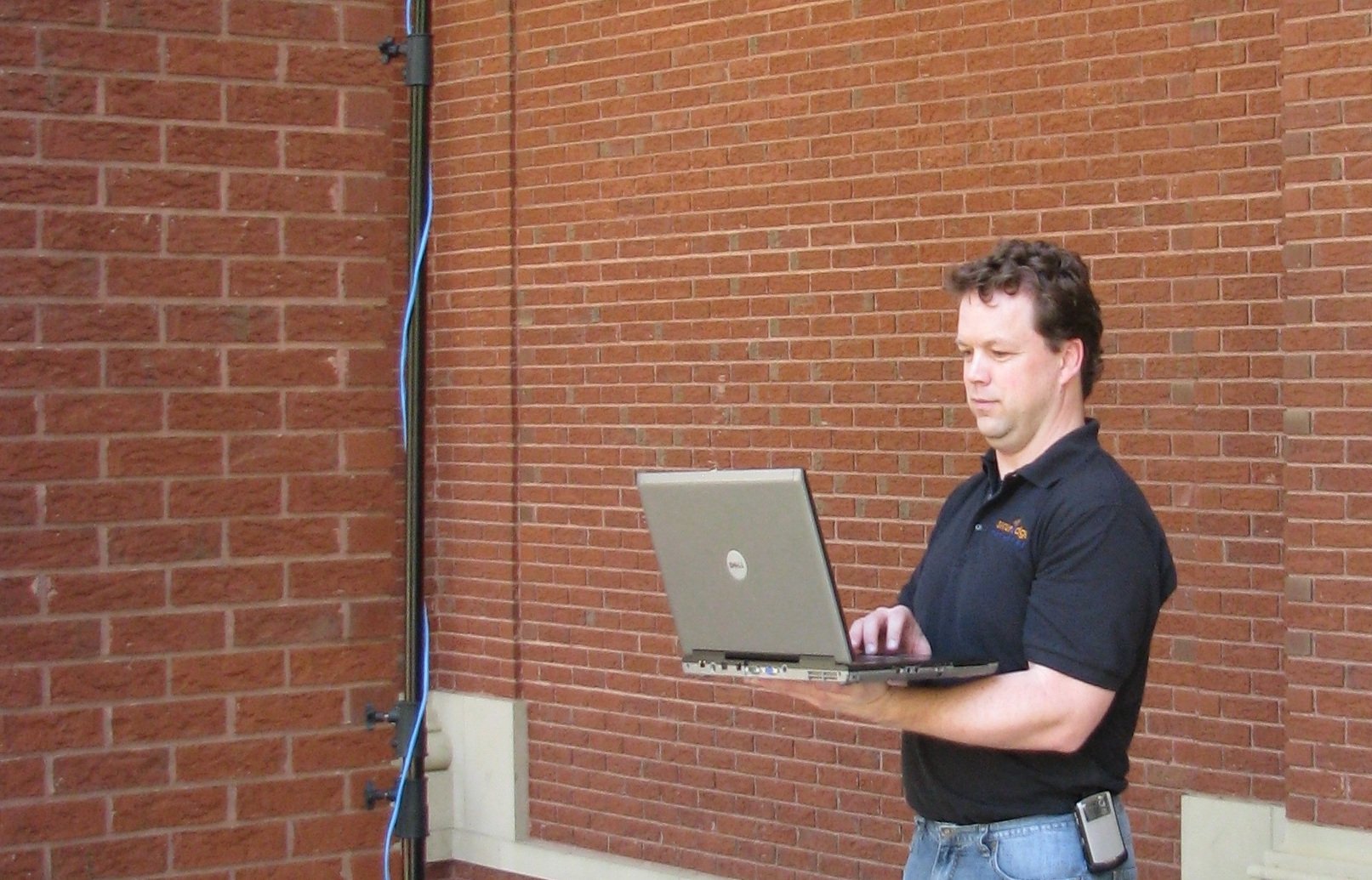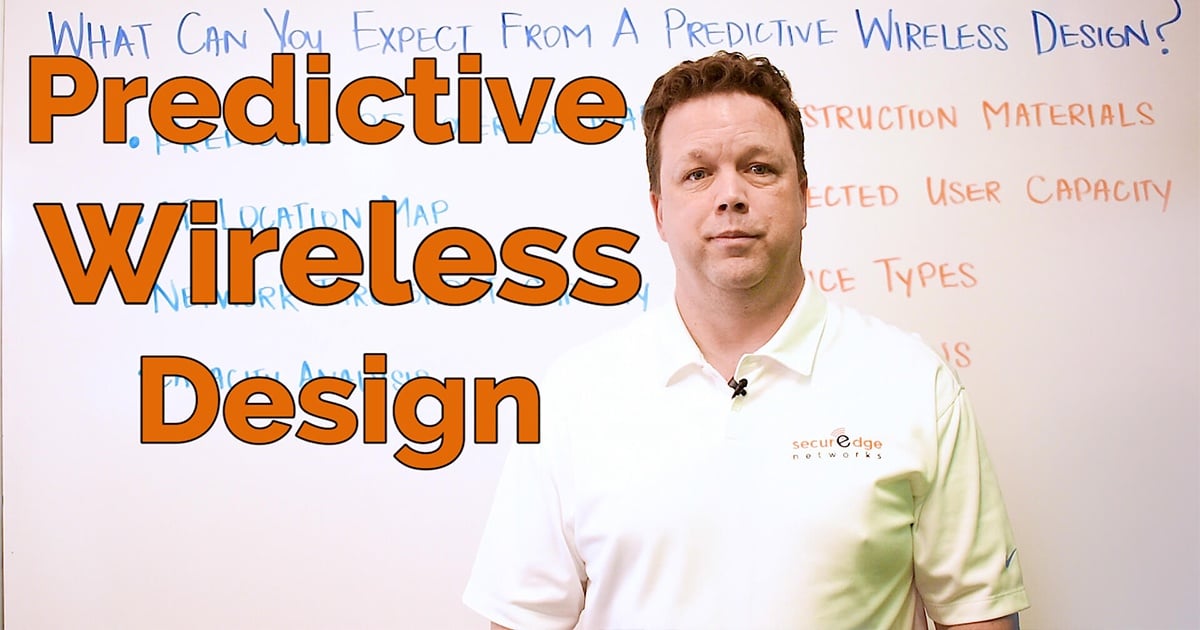When it comes to a predictive wireless site survey, there are a lot of questions. Here is a list of our answers to the questions that are frequently asked by our customers.
What is a predictive wireless site survey?
A predictive site survey is a virtual survey of your site or facility that uses pertinent information about the site to plan the wireless network. Typically this means the building floor plans are loaded into predictive site survey software to develop a wireless network design. Predictive site survey tools will account for building materials, square footage, and the number of wireless users, types of applications, antenna models and other variables to provide a reliable predictive wireless plan for your site or facility.
Is a predictive site survey better than a physical site survey?
A predictive site survey is preferred in some situations to a physical site survey for a number of reasons.
-
A predictive survey is quicker in most cases to a physical survey and can assist in turning around a quote for a wireless project much quicker.
-
A predictive survey is also a lot less expensive than a physical survey. Since a physical survey involves many man hours and lots of measurements the time factor gets expensive.
-
Predictive surveys are also much more efficient at predicting channel assignments, power settings and AP placement than physical surveys.
Can a predictive site survey replace the need for a physical site survey?
In many cases the answer is yes. This is especially true when the physical site survey is being done as a “dog and pony” show. Some wireless vendors break out all the survey gear to “Wow” the client with a show. However, we evaluate each request on an individual basis and determine which survey type is beneficial and necessary. In some cases we will perform the predictive survey to turn around very solid budgetary numbers and a plan quickly. Then we will do a physical survey in targeted spots to confirm our numbers. We have been at this a long time and have seen the transition from the days when all there existed was a physical survey to today when we have both types to choose from.
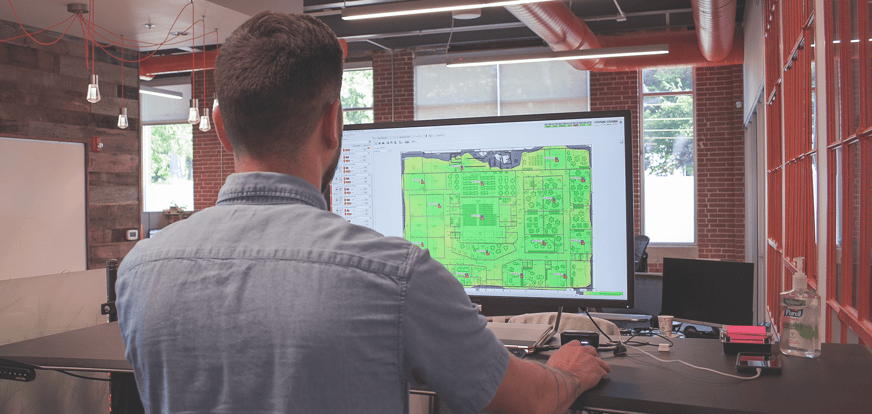
How accurate is a wireless design based on a predictive site survey?
Predictive site surveys are surprisingly very accurate. We find that on the whole we see about a 5 – 8% margin for error and we can adjust for this several ways through the way we analyze, design and deploy. Here are a few things we do to allow for adjustments during the deployment phase:
-
During the predictive site survey, we design the system using access point power settings at 50% to allow for adjustments onsite. This allows us to increase signal strength to fill in any coverage challenges in the real in environment. Some wireless vendor platforms will even self-adjust signal strengths to fill in holes and coverage areas as well as load balancing wireless clients, making the deployment process seamless.
-
Our wireless installers leave 10 – 15’ loops in the cabling for each AP to allow for some physical adjustments after everything is installed. Sometimes there are obstacles no one knew about in the facility and this foresight comes in very handy.
-
We ask a lot of questions about your site or facility to have a better understanding of what type of building environment we are working with.
-
We’ve deployed wireless in office parks, hospitals, schools, universities, airports, museums, industrial buildings, and even large outdoor environments. We developed formulas from our extensive deployment experience to account for many variables and minimize the error of margin.
What information do you need to conduct a predictive site survey?
The more information provided to us the better the plan outcome will be. With this in mind here is a list of the information needed for the survey.
-
Floor plans or Campus maps in electronic format. CAD files are the best followed by JPEG and at the least a PDF can work in a pinch.
-
Floor plans or Campus map print outs or electronic files marked up with areas of desired coverage. All areas where coverage is not desired are beneficial. Also include in the plans or maps areas where there will be high concentrations of wireless users (libraries, media centers, auditoriums, large classrooms, conference centers, nurse stations, etc.).
-
Building or Campus dimensions (length x width). This will give us the square footage of the building or the Campus area for coverage. We can use Google Earth sometimes to get these dimensions but they are not always the most accurate.
-
Building construction materials; concrete, brick, steel, wood 2x4, glass, drywall. Each of these materials affects RF in a different way and knowing where they exist in the facility will ensure an efficient design.
-
Knowing the number of wireless users on the planned network will help us to make sure there is enough capacity to accommodate everyone.
-
The types of applications; streaming video, high resolution graphic downloads, bandwidth intensive applications, Wireless VoIP (VoFi), etc.., intended to be utilized on the wireless network allow us to plan adequate bandwidth.
-
How many classrooms are in the facility and approximately how many students per classroom? This information allows us to plan for AP allocation throughout the facility.
What can I expect to receive from a predictive site survey?
We can’t speak for all wireless network consultants when it comes to this but here is what SecurEdge Networks will provide with our surveys;
-
AP placement/coverage maps of your facility or campus.
-
Wireless network proposal including costs; materials and labor
-
Statement of work detailing what will be delivered and how
-
Project plan process showing steps from analysis, design, deployment to support.
If you have any questions on Wireless Network Design feel free to comment here or you can contact us for some assistance. We also offer some free resources like our Wireless Network Design Kit.

